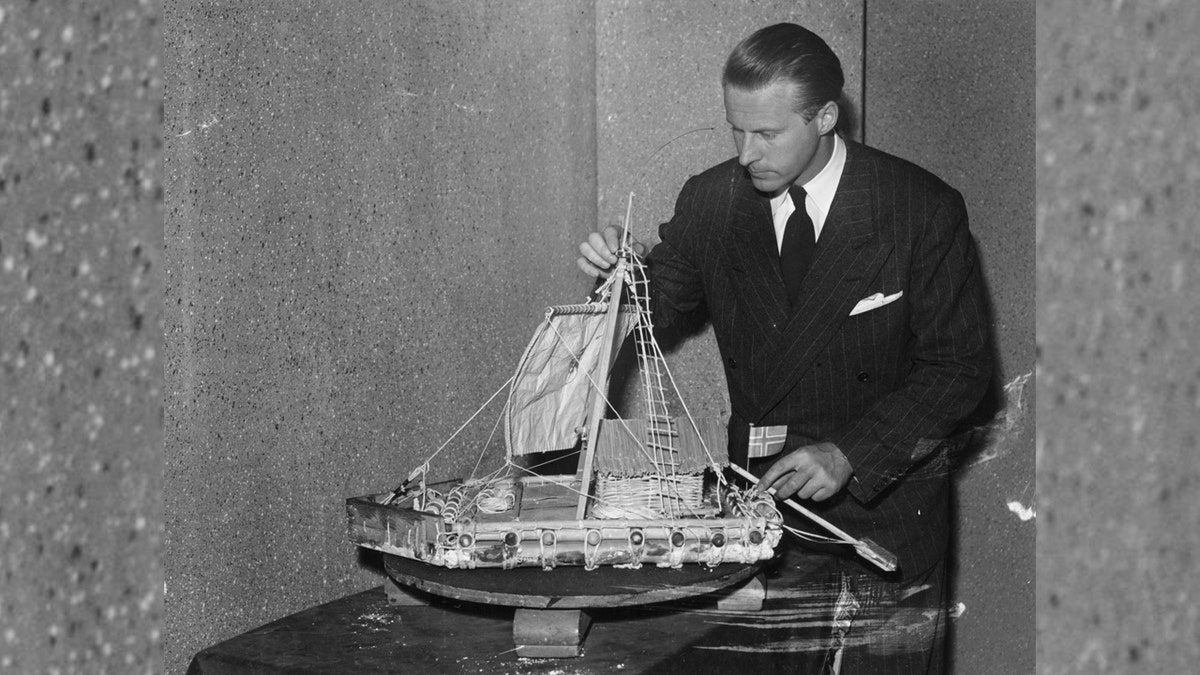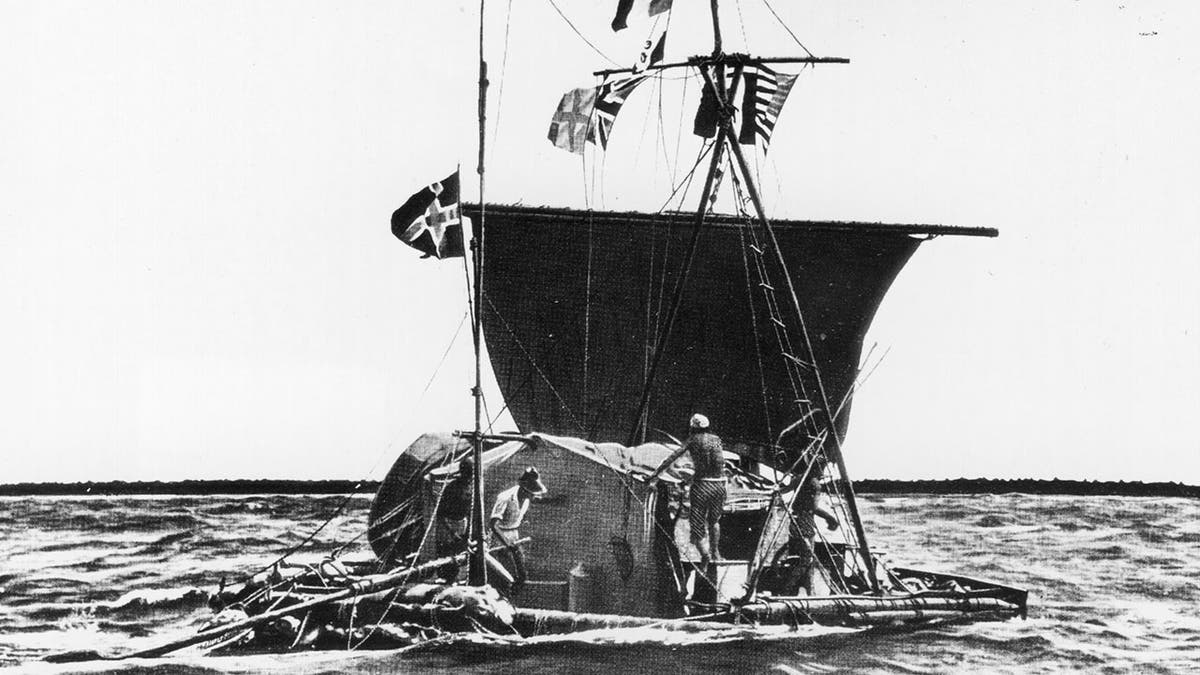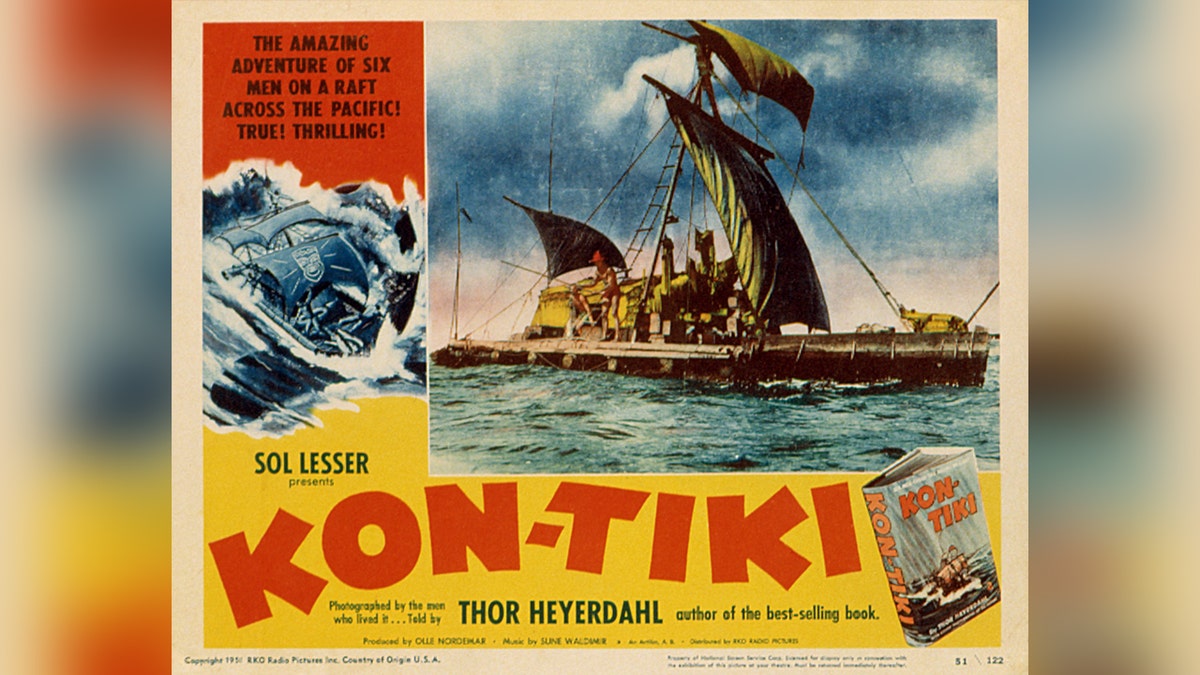Explorer shares artifacts from 17th century Spanish shipwreck on 'America's Newsroom'
Allen Exploration founder Carl Allen shares some unique pieces from the groundbreaking 17th century shipwreck his crew recently uncovered near the Bahamas.
Norwegian explorer Thor Heyerdahl and his crew arrived in Polynesia after 101 days at sea aboard the Kon-Tiki raft on this day in history, August 7, 1947.
Hyderdahl, along with five crewmen (and one parrot), left Callao, Peru, aboard the Kon-Tiki, a balsawood raft, on April 28, 1947.
Heyerdahl was attempting to prove that it was possible the Polynesian islands were settled in part by people indigenous to South America, said the Kon-Tiki Museum's website.
ON THIS DAY IN HISTORY, AUGUST 6, 1911, TV SITCOM STAR LUCILLE BAR IS BORN
Inspired partly by the story of "Kon-Tiki Viracocha," an Incan creation myth claiming that the deity Viracocha had left Peru on a raft, heading west, Heyerdahl was ridiculed when he presented his ideas to other anthropologists in 1946.
"They gave him the cold shoulder," the Kon-Tiki Museum SAID. Herbert Spinden, an anthropologist, even said, "Sure, see how far you get yourself sailing from Peru to the South Pacific on a balsa raft!"

Norwegian anthropologist Thor Heyerdahl seen here with a model of the balsa raft, Kon-Tiki. The Kon-Tiki and its crew arrived in Polynesia on August 7, 1947, after 101 days at sea. (Express/Express/Getty Images)
Up for the challenge and confident in his theory, Heyerdahl began assembling a crew — and a raft.
Despite the risks inherent with crossing the Pacific Ocean in a raft constructed out of balsa wood, finding a qualified crew was "relatively easy," said the museum.
FIRST MEN ON THE MOON, A UNIQUE AMERICAN ACHIEVEMENT, STILL AMAZES US TODAY
Heyerdahl was joined on the expedition by fellow Norwegians Knut Haugland, Erik Hesselberg, Torstein Raaby and Herman Watzinger, and Swede Bengt Danielsson.
"Thor’s criteria in choosing crew members were that they all possess[ed] unwavering courage as well as one unique qualification, indispensable for the expedition," said the museum.
Only Hesselberg, a childhood friend of Heyerdahl's who served as the Kon-Tiki's navigator, had any maritime experience.

The Kon-Tiki raft, seen above, proved to be an excellent seaworthy vessel, said Heyerdahl in his log. (Keystone/Getty Images)
The crew traveled together to Ecuador to get wood to build the raft, then to Peru to actually build it.
While any ancient indigenous Peruvian who would have made the journey to Polynesia would have done so without supplies such as sunscreen, radios and sleeping bags, the Kon-Tiki was well-equipped for its voyage.
Using his personal contacts with the American military, Heyerdahl "was able to obtain everything from sleeping bags, field rations, suntan lotion and canned goods, to navigational instruments and radio equipment," said the museum.
Despite naysayers who said the attempt to float across the ocean in a primitive raft would be "pure suicide," Heyerdahl and his crew forged on with their plan to see if his theory were possible.

Heyerdahl documented his expedition in the book "Kon-Tiki," which was also the name of an Academy Award-winning documentary on the trip. (LMPC via Getty Images)
Although the crew made it to Polynesia, the journey was not all smooth sailing.
Heyerdahl and the Kon-Tiki experienced "rogue waves" during the voyage — and the parrot did not survive the trip.
Heyerdahl documented his voyage in the best-selling book "Kon-Tiki" and in the 1950 documentary film of the same name.
The raft, along with objects from Heyerdahl's various other expeditions, can now be viewed today at the Kon-Tiki Museum in Oslo, Norway.
For more Lifestyle articles, visit www.foxnews.com/lifestyle
Heyerdahl documented his voyage in the best-selling book "Kon-Tiki" and in the 1950 documentary film of the same name.
That film won an Academy Award for Best Documentary Feature for 1951.
CLICK HERE TO SIGN UP FOR OUR LIFESTYLE NEWSLETTER
In 2012, "Kon-Tiki," a dramatized retelling of the Kon-Tiki expedition starring Pål Sverre Hagen as Heyerdahl, was released in theaters.
The film was a commercial success in Norway and was nominated for the Academy Award for Best Foreign Language Film, said IMDB.
CLICK HERE TO GET THE FOX NEWS APP
Heyerdahl died in 2002 at age 87.
In 2016, an attempt to recreate the Kon-Tiki expedition had to be prematurely aborted and the crew rescued after unfavorable weather conditions.






















